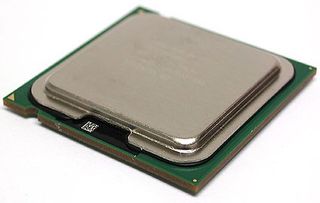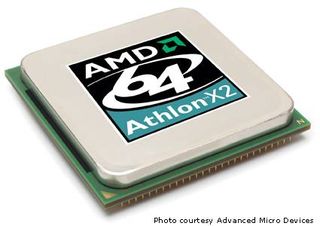Overclocking Guide Part 2: Suggested Components and Settings
Low-Cost Intel: Celeron D For LGA775
Based on the same Prescott core as high-speed Pentium 4 chips, the Celeron D 331's low 2.66 GHz stock speed leaves moderate room for improvement. Once again, we've seen top overclockers use extreme voltage levels that could quickly render the core useless, so we're going to recommend a 1.50 V limit to help ensure that this CPU lives a reasonable life.

Unlike AMD's low-cost option, the lowest-priced Celeron D is not actually the core's lowest speed: formerly available speeds that have not been produced in a long time actually cost more. Buyers get more base speed for less money, but the final overclock will require lower bus speed settings.
Taking the Celeron D from Intel's "FSB533" to Intel's "FSB800" was often possible with lower models such as the 310 at stock voltage, or the 315 at a low 1.45 V, resulting in 3.2 GHz and 3.4 GHz final speeds, respectively. The problem for the Celeron D 331 is that its 20x multiplier forces 4.0 GHz at FSB800, an ultra-high clock speed that may be difficult to reach. A "nonstandard" 166 MHz bus (FSB667) will take the Celeron D 331 to 3.33 GHz, a plausible result that shouldn't require anything more than Intel's retail-boxed cooler.
Mid-Priced AMD: Athlon 64 X2 For AM2
Current Athlon 64 X2 models use AMD's Windsor core, but most have been "speed binned" appropriately so that the cheapest X2 3800+ is often less capable. For a few dollars more, AMD's Athlon 64 X2 4200+ has earned a reputation as a respectable overclocker and is thus our choice. Once again, a 1.50 V limit will help to ensure adequate CPU life.

2.75 GHz should be attainable at a 250 MHz HyperTransport clock using AMD's retail-boxed cooler, but the unlucky few buyers who exceed a core temperature of 55C may require a larger heatsink and fan.
Stay on the Cutting Edge
Join the experts who read Tom's Hardware for the inside track on enthusiast PC tech news — and have for over 25 years. We'll send breaking news and in-depth reviews of CPUs, GPUs, AI, maker hardware and more straight to your inbox.
Current page: Low-Cost Intel: Celeron D For LGA775
Prev Page So You Think You Want To Overclock Next Page Mid-Priced Intel: Core 2 Duo LGA775Most Popular


